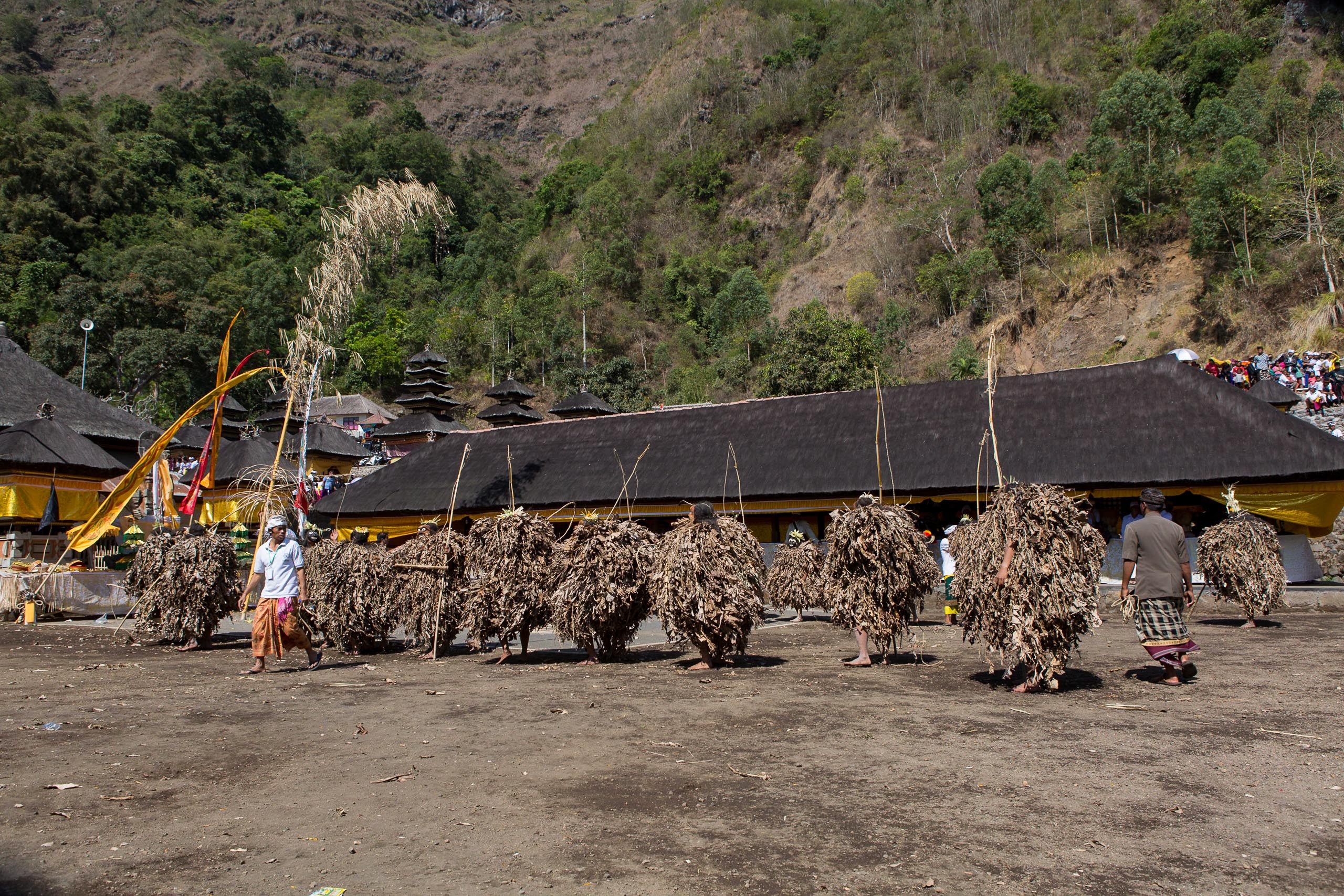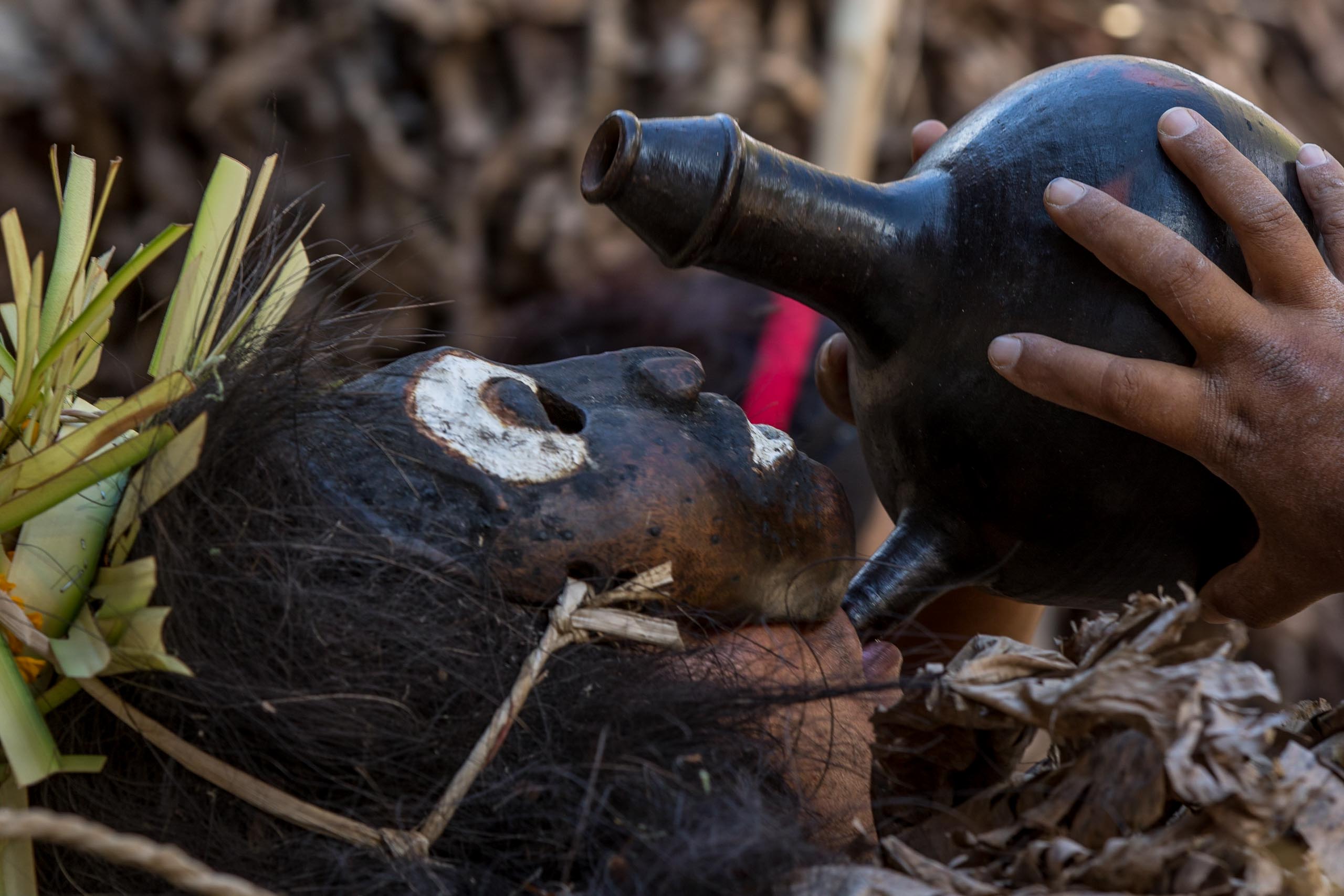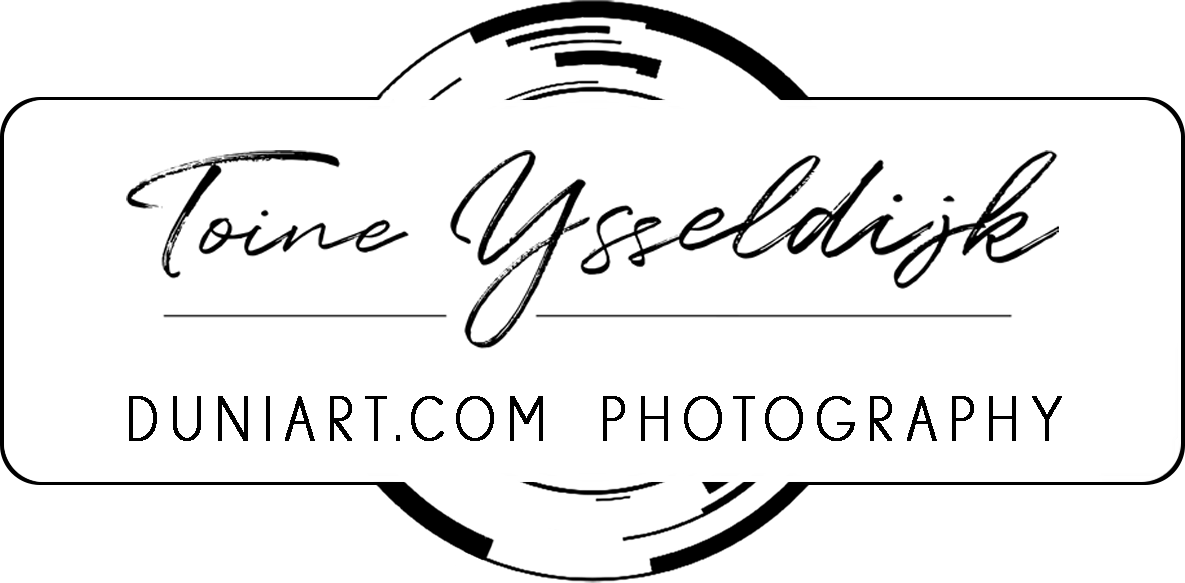High up in the mountains of Northeast Bali lies the ancient Batur caldera. In the middle of the caldera rises the Batur volcano, while the southeast is filled by lake Batur. On the shore of the lake Batur lies Trunyan, one of the few remaining traditional Bali Aga villages. The Bali Aga are descendants of the indigenous people of Bali and their culture pre-dates Hinduism, which came to Bali with the migration of the Hindu kingdom of Majapahit from the island of Java, around 1340.


The culture of each Bali Aga village is unique and in Trunyan one of the surviving ancient rituals is the Barong Brutuk, a ritual and sacred dance performed by the young bachelor men of the village. The young men wear a full-body dress of dried banana leaves, a wig of the black fibre of the sugar palm and an ancient mask made from a coconut.
The Barong Brutuk ritual is performed during the Ngusaba Desa ceremony and the Odalan anniversary celebrations of the village temple, Pura Ratu Pancering Jagat. The ceremony falls in the fourth moon of the ancient Balinese calendar, Purnama Sasih Kapat, and is held once every two years.

A young man having been purified and quarantined begins to get dressed in his banana leaves dress in preparation for the ceremony.
Before the ceremonies start the chosen men spend 42 days in quarantine in the village temple. During this period they are purified and prohibited from dealing with women, consume alcohol or gamble and learn ancient songs and mantras (Kidung). The men also prepare physically for the rituals and collect banana leaves from the nearby village of Pinggan. The dried banana leaves (keraras) are used for the costume of the Barong Brutuk. The dried leaves are knitted together with a banana tree rope and made into a kind of skirt, which are then tied to a corset of banana leaves. The corset is worn around the neck and waist and underneath the men traditionally wear underwear from banana trees rope, although nowadays usually a sarong is used.

There are traditionally 21 masks, impersonating different ancient characters. The characters include four nobles: a king, Rajah Brutuk, a queen, Ratu Brutuk, the sister of the queen, Kakak Sang Ratu, and a prime-minister, Patih, the older brother of the queen. The remaining characters are disciples, ordinary members serving the nobles.

The performance begins with the appearance of the Brutuk disciples, circling three times around the walls of the main temple. Spectators attempt to steal some leaves, while the Brutuk carry whips to beat off their ‘assailants’. The dried leaves are considered to bring fertility and a piece of leave is stored at home for protection. Later during the planting of rice the dried leave is spread out in the rice fields, in hope for an abundant harvest.
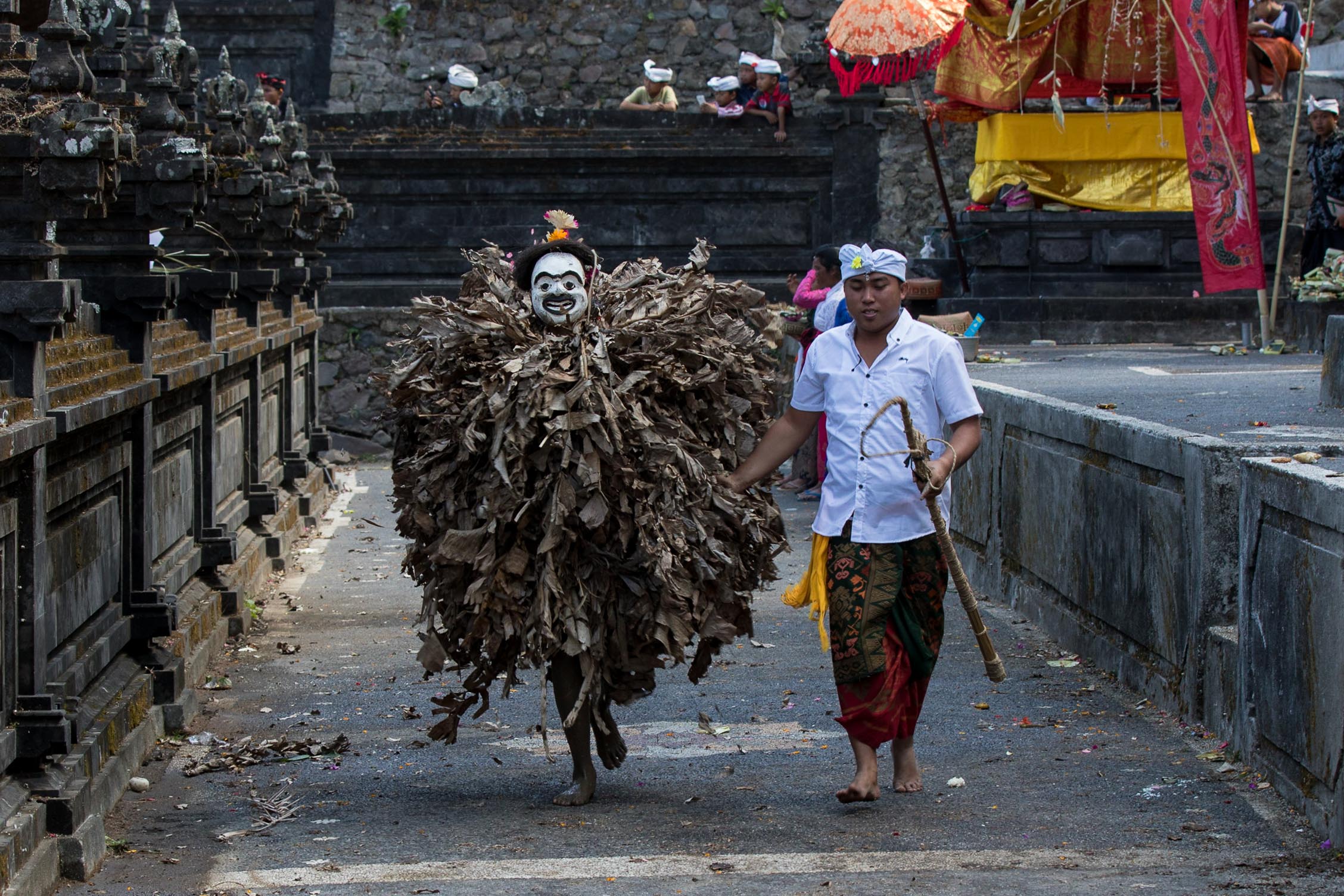
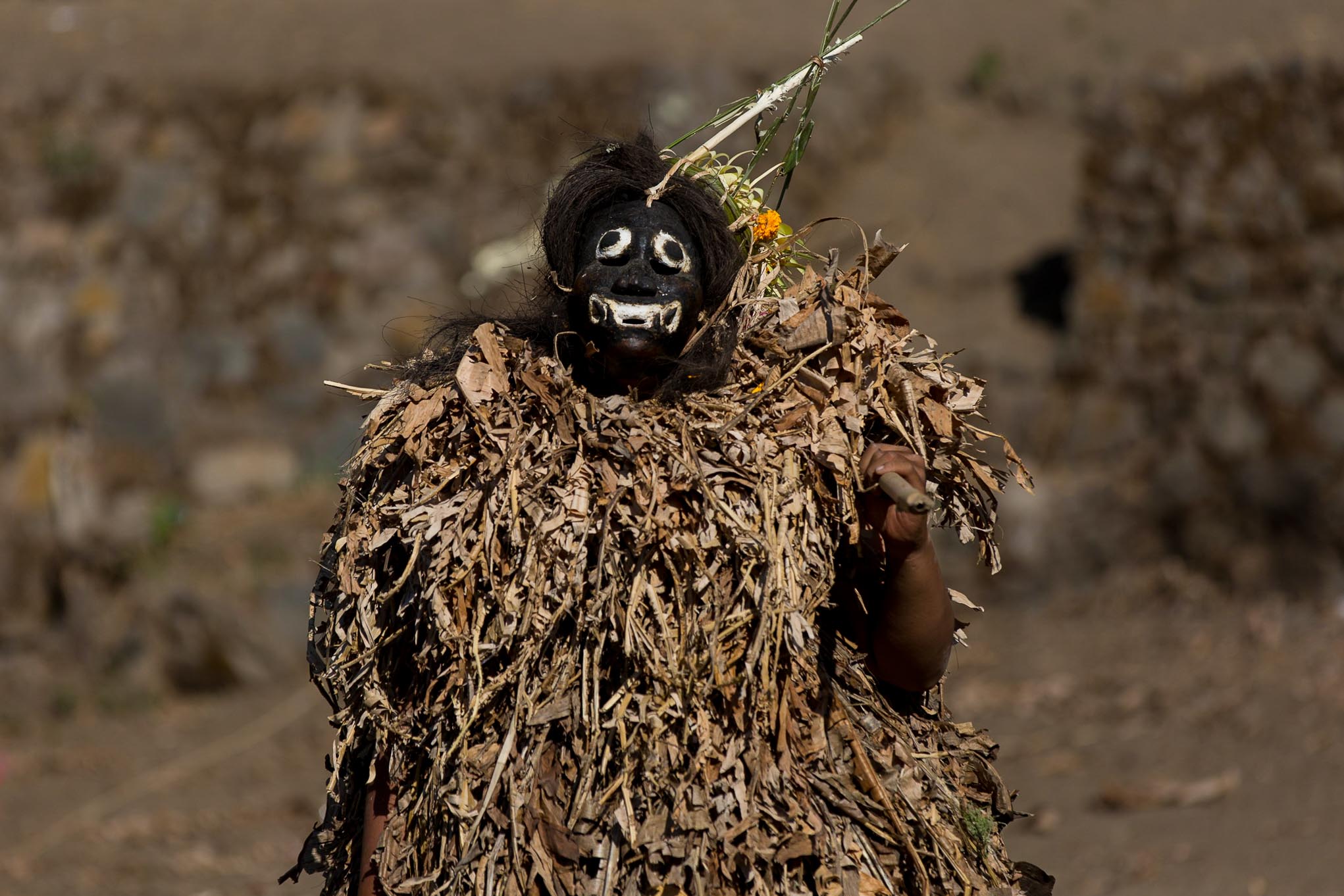
When the four Brutuk nobles appear on the scene a priest approaches them to present offerings, accompanied by salvation prayers for the people of Trunyan. The Brutuk nobles then circle the temple three times and join the other Brutuk.

The nobles have their hair decorated with young palm leaves and flowers.

The first Brutuk disciples start circling around the inner temple. A Brutuk whips spectators as they try to get close enough to try to steal a leaf, as these are believed to be a lucky charm and aid fertility.

This is the first time I got whipped…!
Elsewhere in the temple women and children offer fruit, sweet cakes and other offerings to the Brutuk. The Brutuk do not eat the offerings and some spectators call out to the Brutuk to swap the offerings for cigarettes or money.
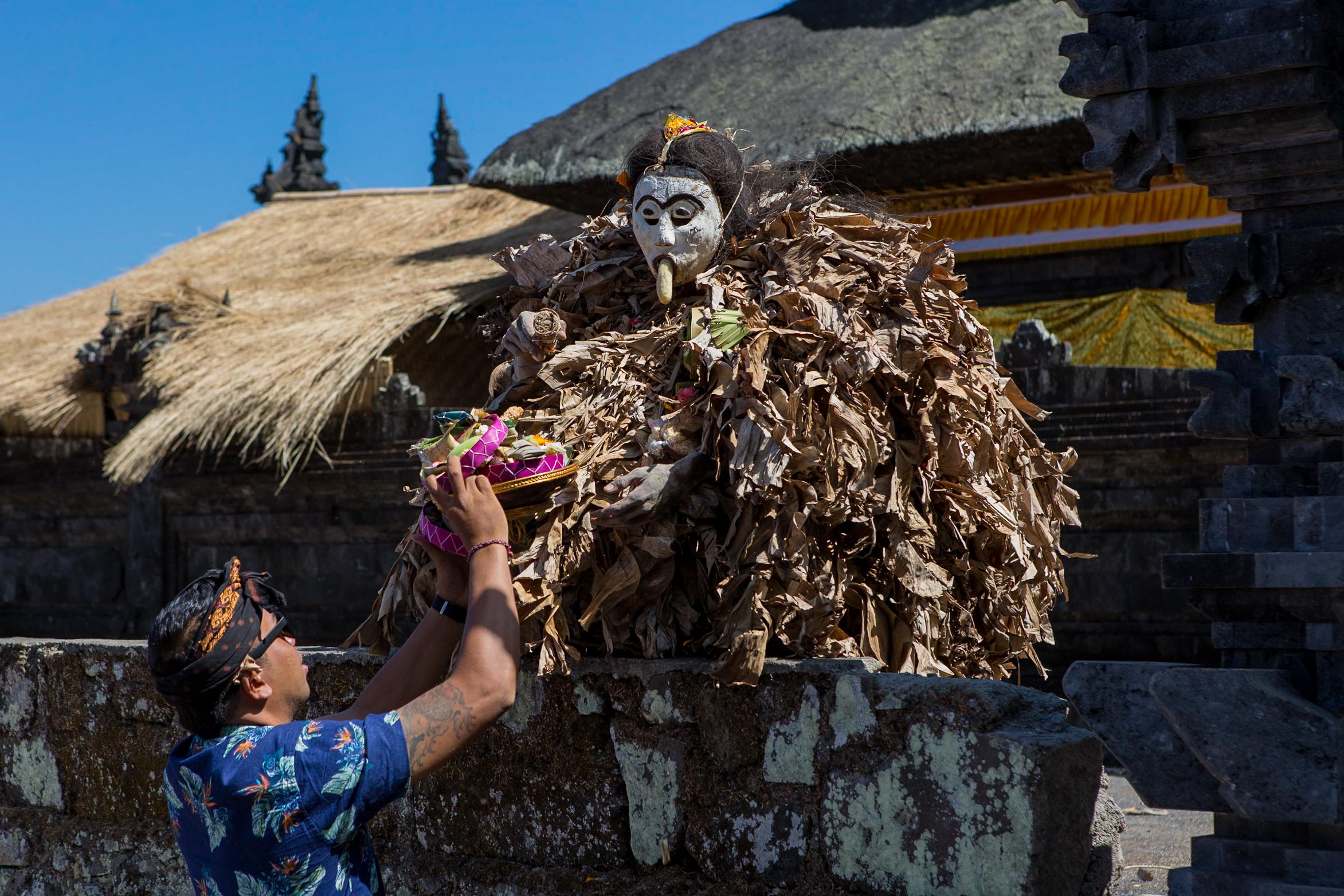
When the Brutuk receive offerings they are temporarily calm and use their whip to bless those making offer, with a small tap on their heads.

Blessings from the queen, Brutuk Ratu.

In the afternoon the Brutuk move to the lower compound of the temple and the performance slowly reaches its climax and the Brutuk start to swing their whips further and harder to the spectators.
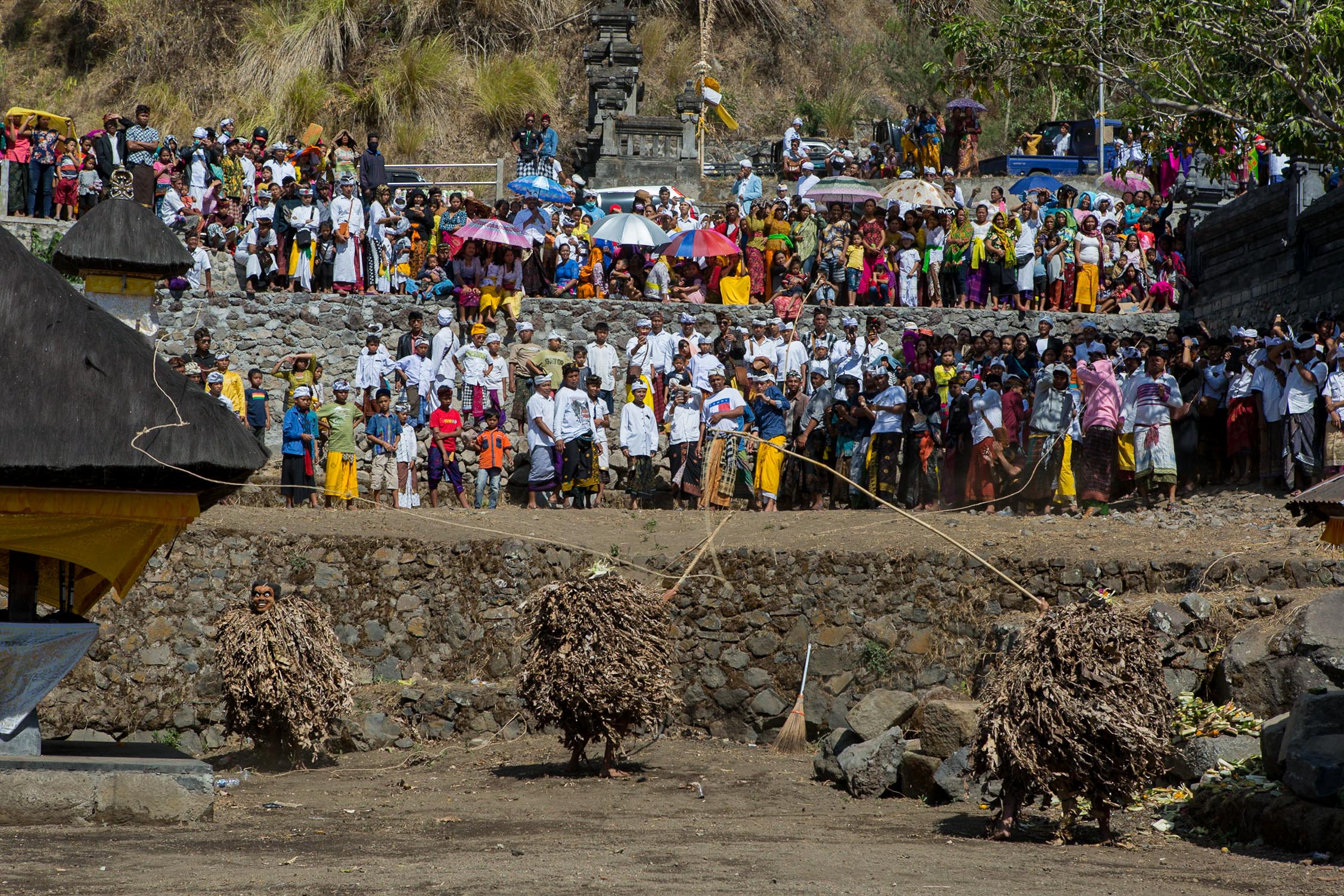

The whip lashes are believed to give healing (tamba) to the sick. Some children call out and tempt the Brutuk to whip them: ”Ratu!! meriki Ratu!” (“Queen! Here, queen!”) or ”Malih Tu! Nunas Tamba, Tu!” (“Again, queen! Medicine, queen!”). Late in the afternoon the young men slowly run out of energy. A welcome drink.A bit of fresh air.
Spectators scramble after fruit and other offers that the Brutuk throw at them, as these are believed to be a blessing and a good medicine. Only a few spectators actually get hit.
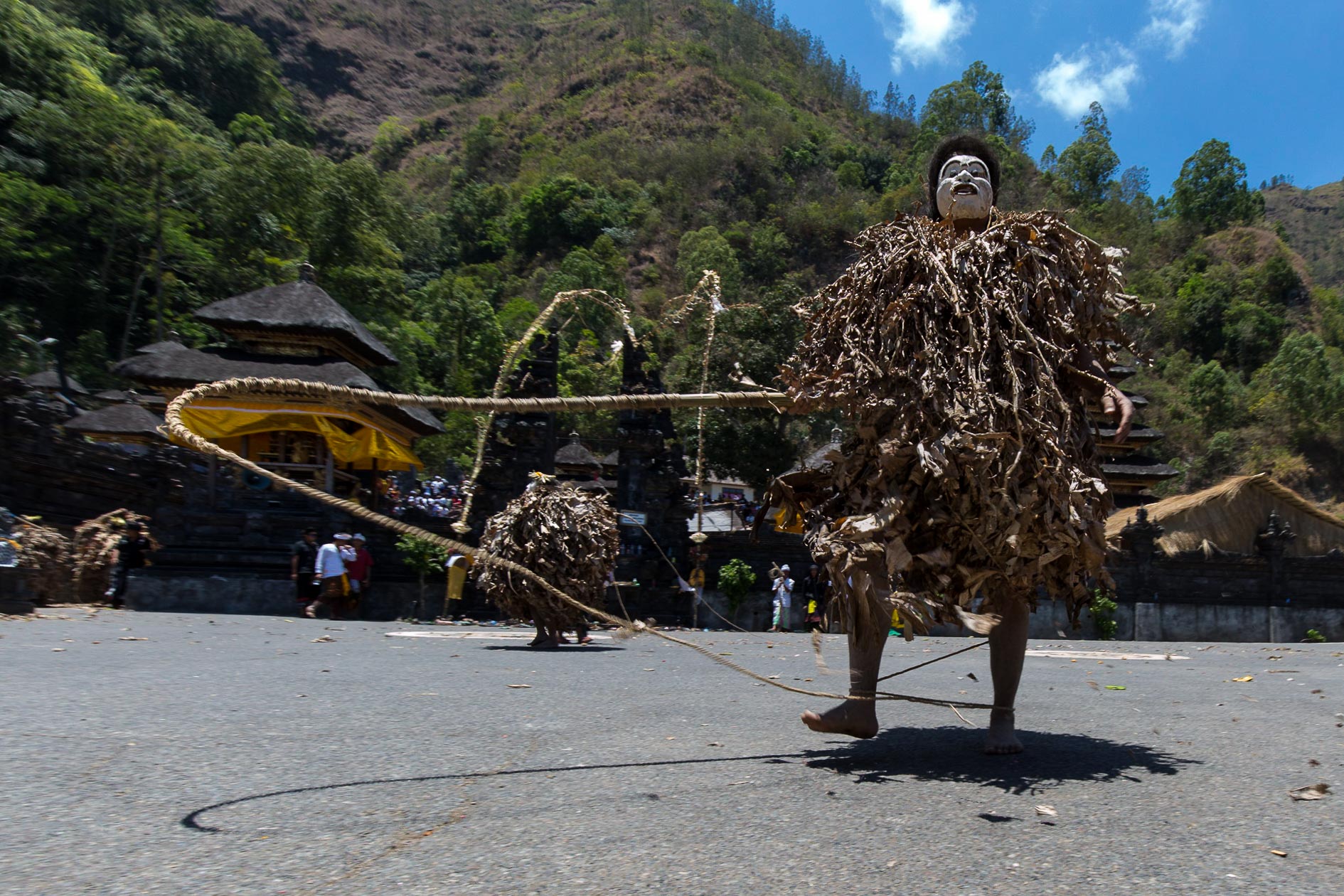

During the final sequence of rituals the Brutuk take turns and dance in pairs in the middle of the temple’s courtyard, closely observed by the other Brutuk and excited spectators. Each pair is mimicking the movements of a pair of wild jungle fowl, the cock courting the hen. This love dance then culminates in each pair throwing away their banana leaves dress. The king and queen Brutuk perform last and when they finish their ritual courtship all young men run to the lake for a final cleansing and cooling plunge in lake Batur. The sacred masks are then taken by the older tribesmen and will be stored in the inner temple for the next two years.
